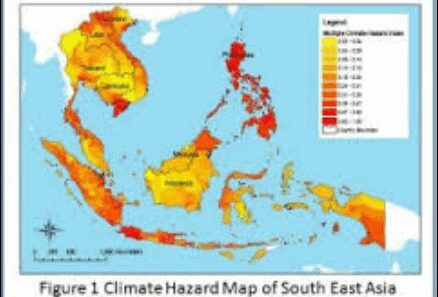Japan, an archipelago comprised of over 6,800 islands, is a canvas painted by nature’s brush—a tapestry woven with distinct climatic threads. The interplay of geographical features, elevation variances, and ocean currents bestows upon this nation a multifaceted climate that contributes significantly to its seasonal identity. The climate of Japan is no mere backdrop; it shapes the culture, agriculture, and lifestyle of its inhabitants. Understanding these climatic intricacies requires a deeper exploration into the seasons, monsoons, and, undeniably, the exquisite earthly beauty that emerges as a result.
The climatic conditions in Japan can be generally categorized into four main seasons: winter, spring, summer, and autumn. With the unyielding passage of time, these seasons orchestrate a symphony of transformation across the islands. Winter, often characterized by frost-laden landscapes and adventurous snowfalls, blankets areas in a crystalline white. Regions such as Hokkaido become a playground for winter sports enthusiasts, where the snow falls like whispers of nature’s tranquility. The atmospheric chill signals a time for communal gatherings, warm meals, and heartfelt hospitality, offering a poignant reminder of the warmth of human connection amidst the cold.
As the icy grasp of winter begins to relent, spring emerges like a gentle breath—a rebirth encapsulated in the blooming cherry blossoms, or sakura. The ephemeral beauty of these blossoms attracts visitors from across the globe, heralding the onset of hanami (flower viewing) festivals. This spectacular metamorphosis from drab to vibrant celebrates not just the beauty of the flora but also the transient nature of life itself. In Japan, spring is a vivid reminder that beauty often exists in moments that are fleeting. The climate warms, and with it, society blossoms too, as people are invigorated by the sight of petals dancing in the breeze.
Summer envelops the archipelago like a warm embrace, swelling with heat and humidity. The formidable influence of the Pacific Ocean stirs the atmosphere, leading to the formation of monsoons that characterize this season. While the relentless sun showers the land, the ensuing monsoons bring both rejuvenation and challenge. Rain-soaked earth transforms parched landscapes into verdant fields abound with rice, a staple of Japanese cuisine. This culinary cornerstone thrives in a climate that oscillates between deluge and sun, reminding us of the delicate balance wielded by nature.
As Japan’s summer reaches its zenith, the sultry air often brings with it typhoons—nature’s tempestuous reminders of its unbridled power. Each typhoon, a harbinger of change, also poses a significant risk with pervasive winds and torrential rains, affecting lives and livelihoods. Yet, with resilience, the Japanese people have cultivated a profound relationship with these seasonal tempests. They adapt their building styles and agricultural practices to mitigate risks and harness the movement of these storms, embodying a harmony with nature that is remarkable.
Autumn marks another seismic shift in the climatic landscape, as the heat dissipates into a cool embrace, inviting a profusion of color. The foliage transforms from vivid greens to breathtaking hues of crimson, gold, and ochre, crafting picturesque vistas that seem painted by divine artistry. This season epitomizes the fleeting nature of beauty, leading to the celebration of harvest festivals and gratitude for the bountiful blessings bestowed by the earth. The Japanese culture, deeply entwined with Shinto beliefs, emphasizes the acknowledgment of the kami (spirits) that inhabit these natural elements, fostering respect and stewardship for the environment.
The monsoon season, particularly notable in summer, also plays a crucial role in the climatic identity of Japan. Each year, this phenomenon prompts a plethora of meteorological dynamics, leading to water surpluses that feed the lush greenery of rice paddies and forests. However, the monsoon’s duality reveals itself in cyclical extremes, where heavy rainfall may lead to devastating landslides and flooding, especially in mountainous regions. The coexistence of beauty and peril highlights the complexity of Japan’s climate: it supports life while also asserting nature’s dominion.
Yet, Japan does not merely exist within its climatic patterns—it flourishes because of them. The rich biodiversity, from the majestic peaks of the Japanese Alps to the enchanting coastlines of Okinawa, underscores a unique appeal that captivates both residents and visitors. This tapestry of environments cultivates an unparalleled opportunity for sightseeing and immersion in nature’s splendor. Each season bestows distinct landscapes, flavors, and cultural rituals that manifest the harmonious relationship between humanity and the environment.
The juxtaposition of Japan’s climate offers a compelling narrative: it is a land where seasons mirror the cycles of human existence. The ever-changing outdoors serves as a reminder that life, much like nature, is fraught with both intricacies and unpredictability. The rain nourishes growth, the sun fosters joy, and the chill invites reflection. In embracing these climatic rhythms, Japan epitomizes the profound interconnectedness of all forms of life, inviting both contemplative observation and spirited celebration of the earthly beauty that surrounds us—all encapsulated within a single archipelago’s unforgettable climate.







